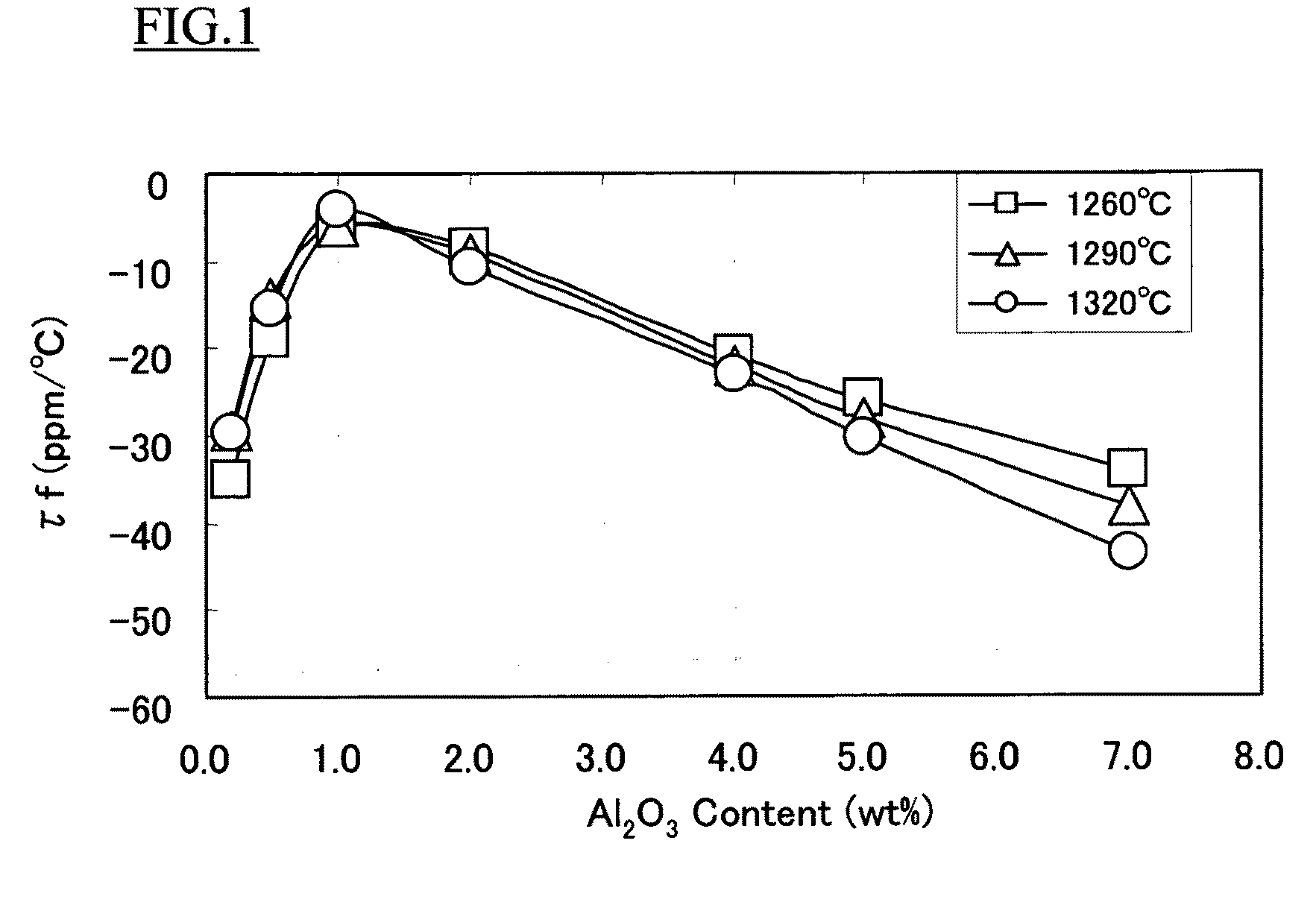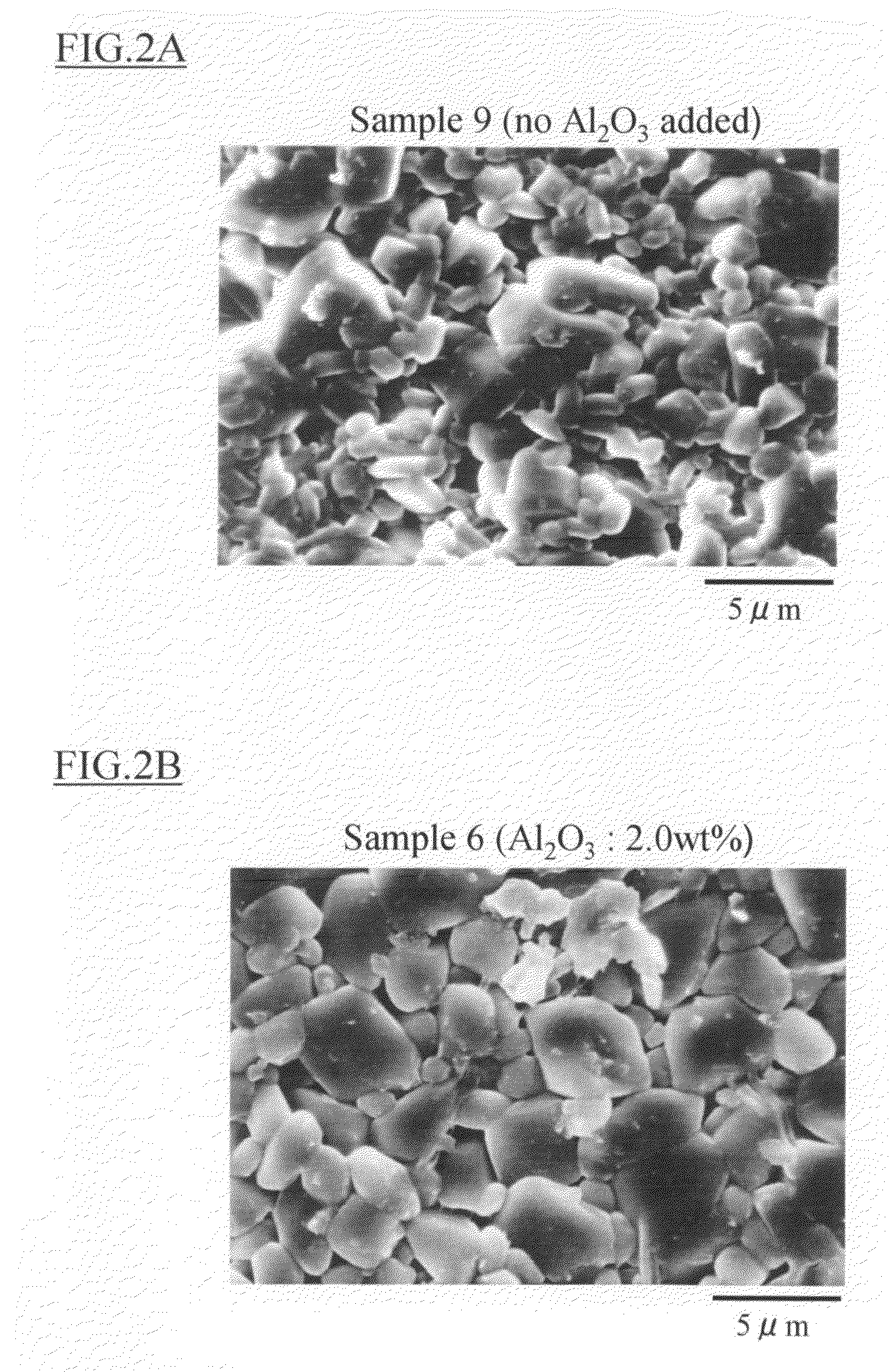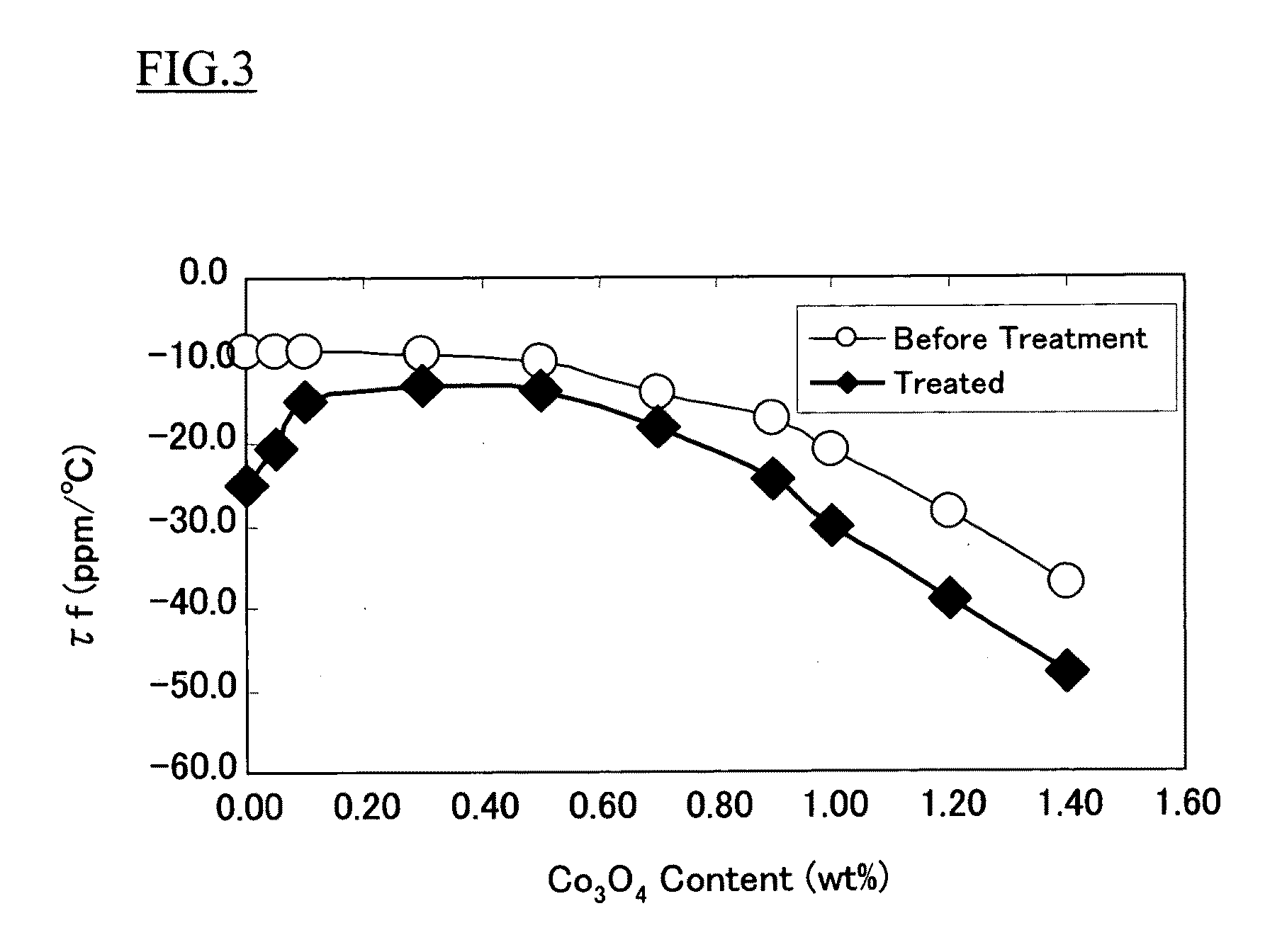Dielectric ceramic composition
a technology of dielectric ceramics and compositions, applied in the field can solve the problems of insufficient resistance inability to achieve and inability to achieve commercialization of products without a certain level of mechanical strength, so as to improve the mechanical strength of dielectric ceramic compositions and reduce the difficulty of production and use. , the effect of good frequency-temperature coefficient
- Summary
- Abstract
- Description
- Claims
- Application Information
AI Technical Summary
Benefits of technology
Problems solved by technology
Method used
Image
Examples
example 1
[0055]First, as materials for forsterite (2MgO—SiO2), MgCO3 and SiO2 were prepared. The MgCO3 and. SiO2 were weighed to have a mole ratio of 2:1, added with SrCO3 and MnCO3 in a total amount of 0.8 mass %, wet mixed for 6 hours by ball mill and dried. The dried powder was calcined under conditions of 1000 to 1200° C. and 2 to 5 hours. The calcined powder was wet pulverized by ball mill and dried to obtain forsterite material powder with an average particle size of 2.0 to 2.5 μm.
[0056]Next, as materials for calcium titanate (CaTiO3), CaCO3 and TiO2 were prepared. The CaCO3 and TiO2 were weighed to have a mole ratio of 1:1, added with MnCO3 and SiO2 in a total amount of 1.0 mass %, wet mixed for 6 hours by ball mill and dried. The dried powder was calcined under conditions of 1000 to 1200° C. and 2 to 5 hours. The calcined powder was wet pulverized by ball mill and dried to obtain calcium titanate material powder with an average particle size of 2.7 to 3.3 The obtained forsterite and ...
example 2
[0064]Except for weighing and blending Al2O3 as a subcomponent with content ratios to the main component materials as shown in Table 2 while using main components with same compositions as Sample 6, a dielectric ceramic composition material was produced as in Example 1. Using the produced dielectric ceramic composition material, a dielectric ceramic composition was produced and evaluated as in Example 1. The results are shown in Table 2.
[0065]Also, the produced dielectric ceramic composition material was added with polyvinyl alcohol as an organic binder, granulated and then press-formed at 2.0 tonf / cm2 to obtain a formed green body with dimensions of 20×5.5×1 mm. The green body was fired in air under conditions of 1290° C.-2h to obtain a sintered body. For sintered body, strength (three-point bend) was measured by the following method.
[0066]Strength
[0067]From the obtained sintered body, a specimen with dimensions of 16.0×4.5×0.8 mm was produced, and a three-point bending test was pe...
example 3
[0069]Except for further weighing and blending Co3O4 as a subcomponent with content ratios shown in Table 3, using same component ratios as Sample 6, a dielectric ceramic composition was produced and evaluated as in Example 1. The results are shown in Table 3. Also, resistance to reduction of the sintered body was measured by the following method.
[0070]Resistance to Reduction
[0071]The obtained sintered body was subject to reduction treatment in a reducing atmosphere with N2-100% (pO2=10 ppm) under conditions of 800° C.-10 min. For samples before and after the treatment, frequency-temperature coefficient τf values were evaluated as in Example 1. Then, amount of change between τf values of samples before and after reduction treatment, and change rate were calculated. As a criterion for evaluation, the amount of change within 65% was defined as being good. The results are shown in Table 4 and FIG. 3. Note that in FIG. 3, white circle indicates τf value before reduction treatment and bl...
PUM
| Property | Measurement | Unit |
|---|---|---|
| temperature | aaaaa | aaaaa |
| particle size | aaaaa | aaaaa |
| particle size | aaaaa | aaaaa |
Abstract
Description
Claims
Application Information
 Login to View More
Login to View More - R&D
- Intellectual Property
- Life Sciences
- Materials
- Tech Scout
- Unparalleled Data Quality
- Higher Quality Content
- 60% Fewer Hallucinations
Browse by: Latest US Patents, China's latest patents, Technical Efficacy Thesaurus, Application Domain, Technology Topic, Popular Technical Reports.
© 2025 PatSnap. All rights reserved.Legal|Privacy policy|Modern Slavery Act Transparency Statement|Sitemap|About US| Contact US: help@patsnap.com



